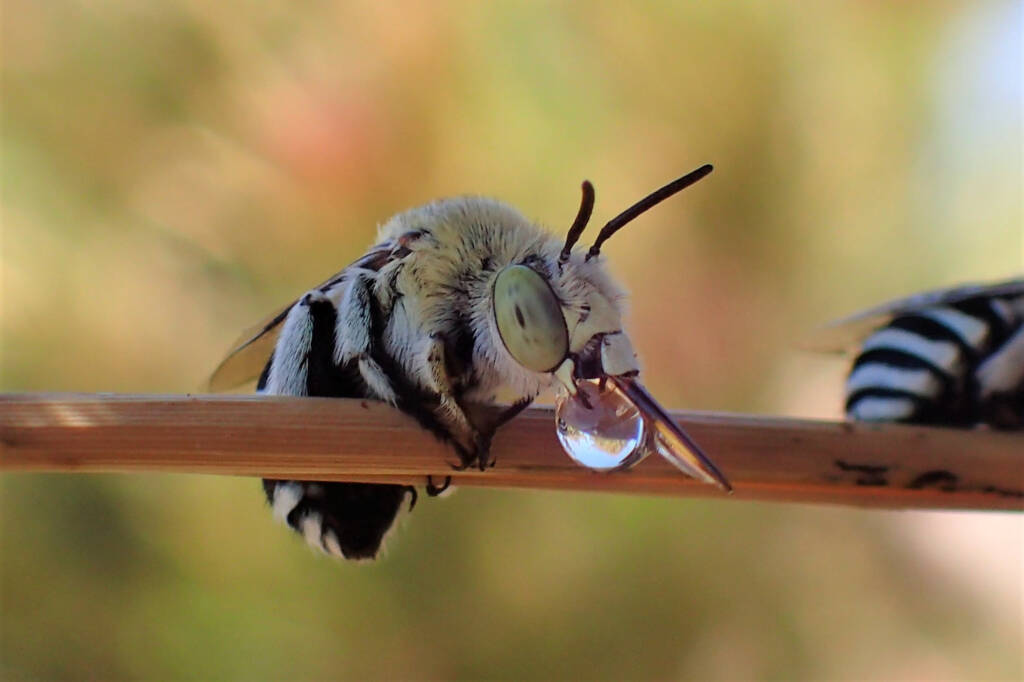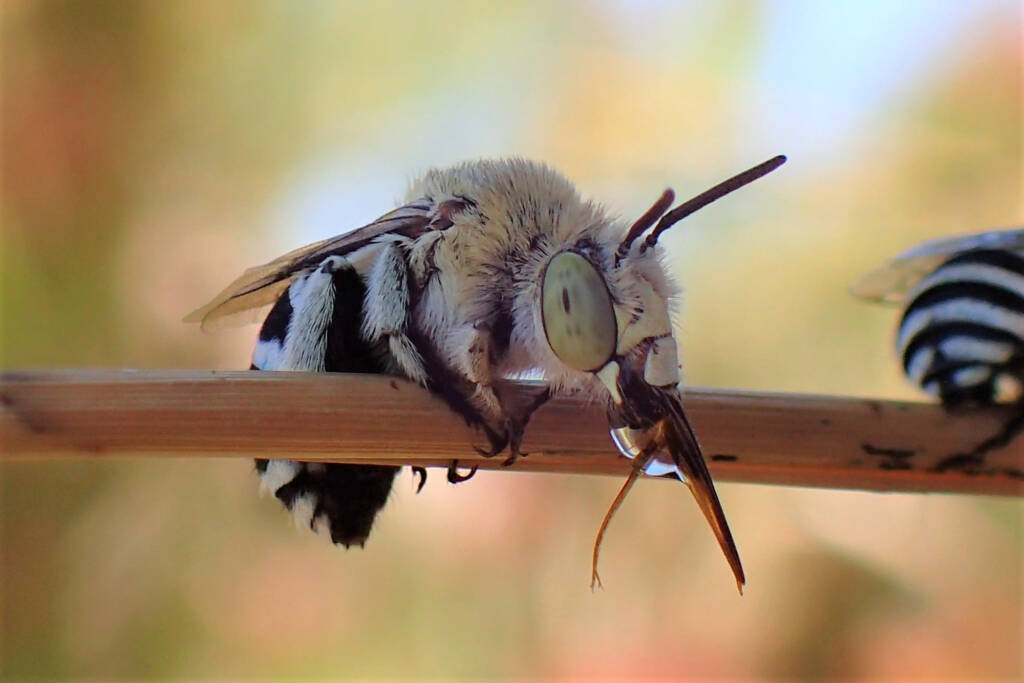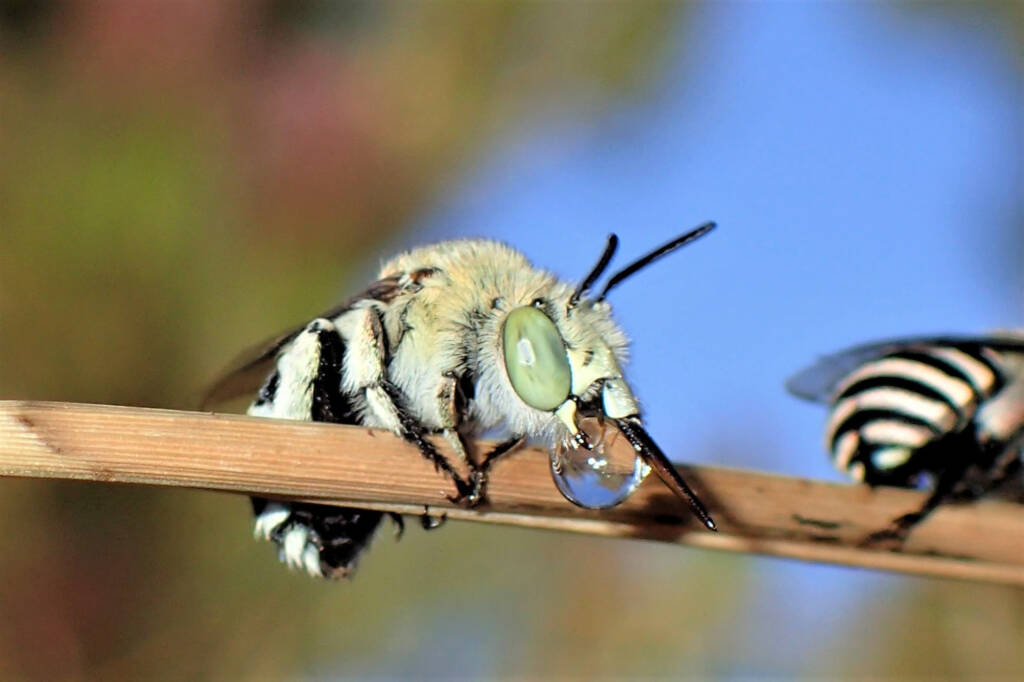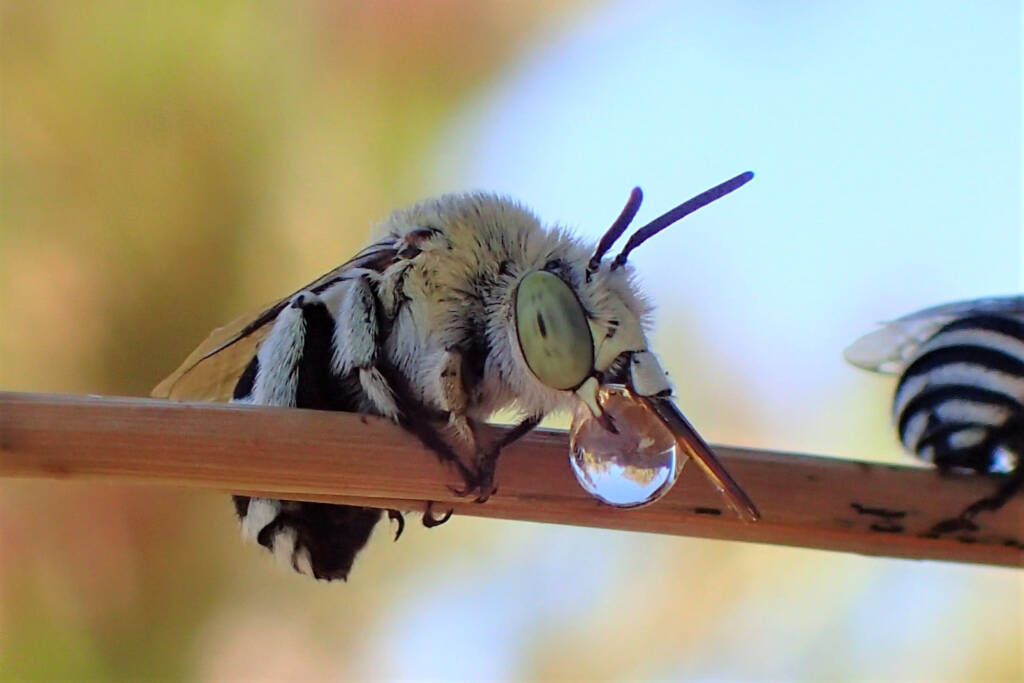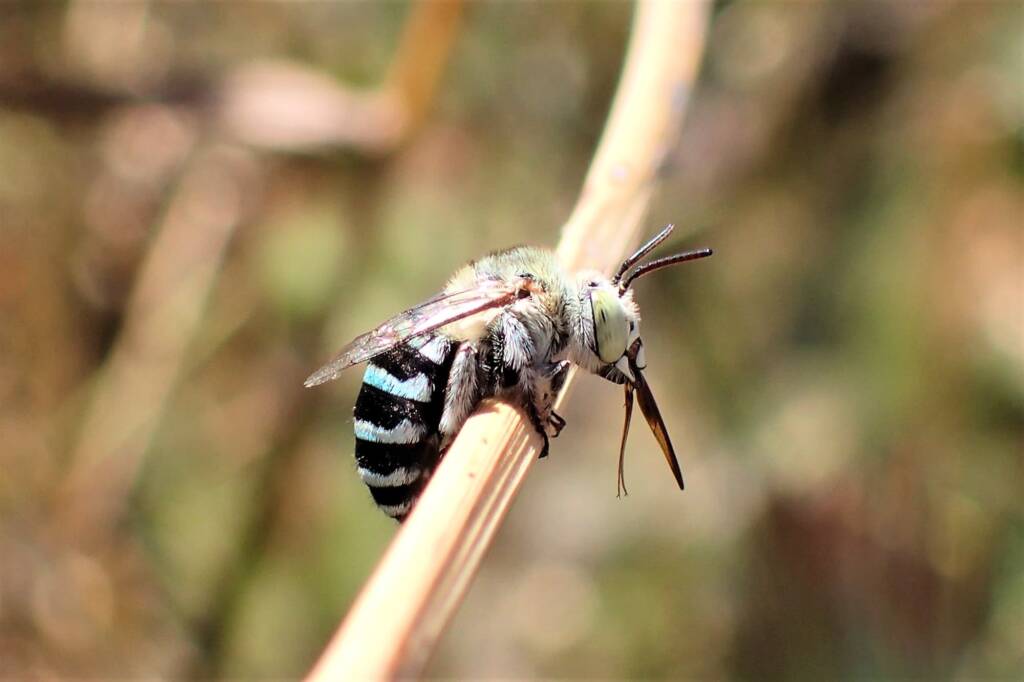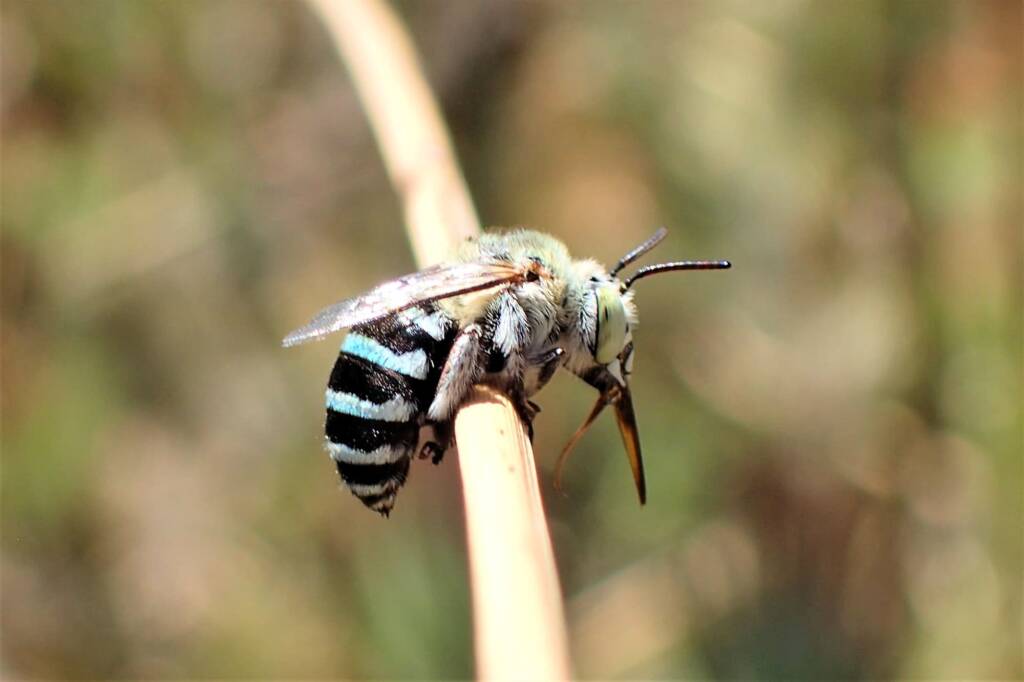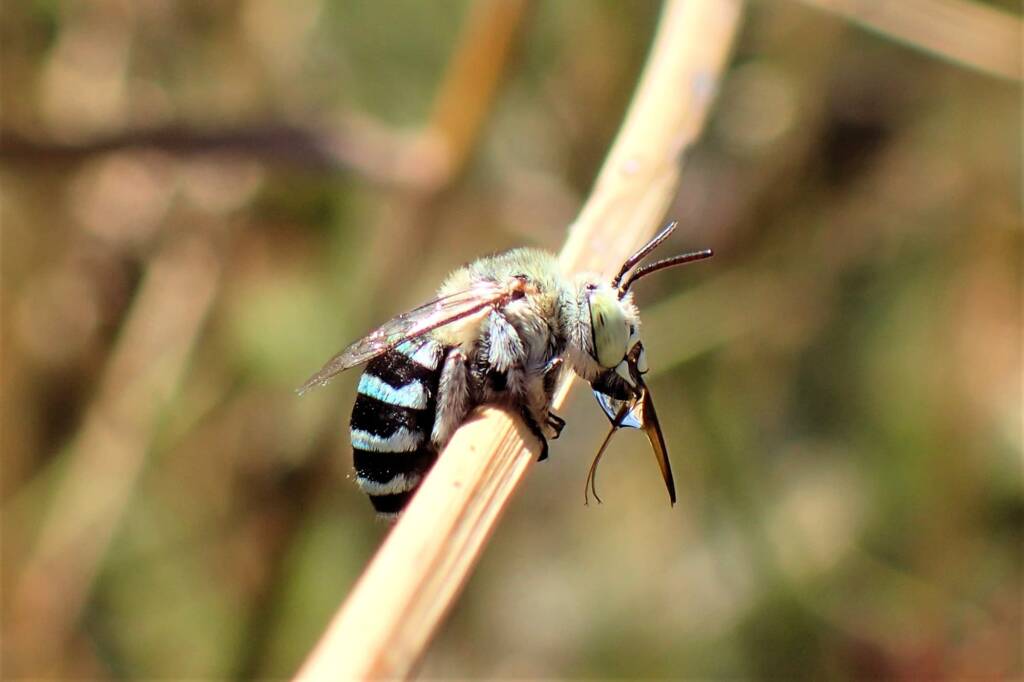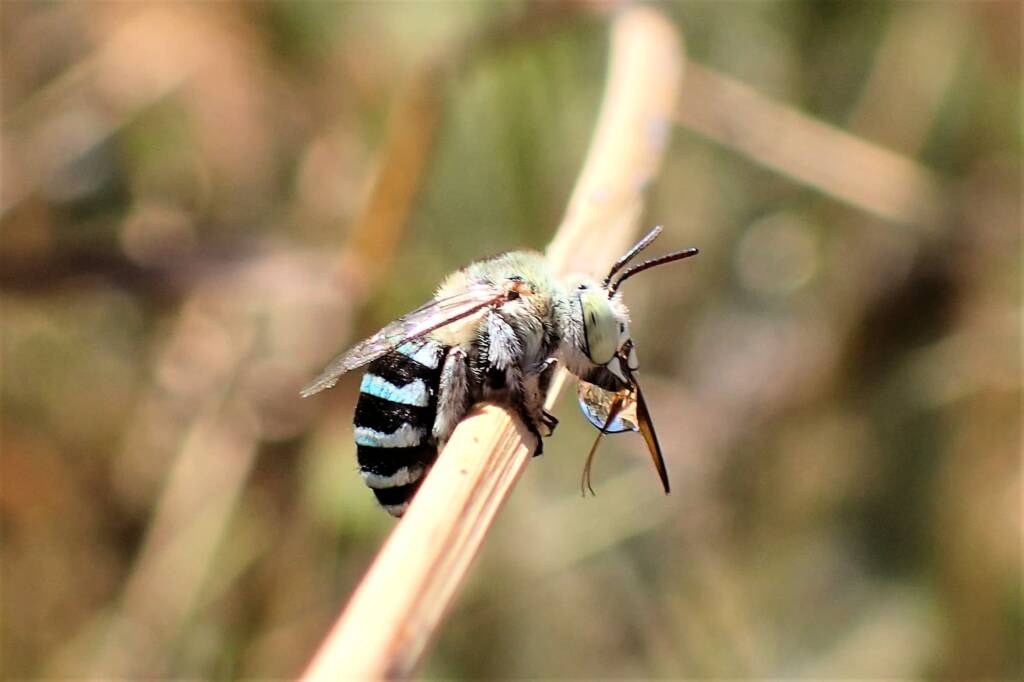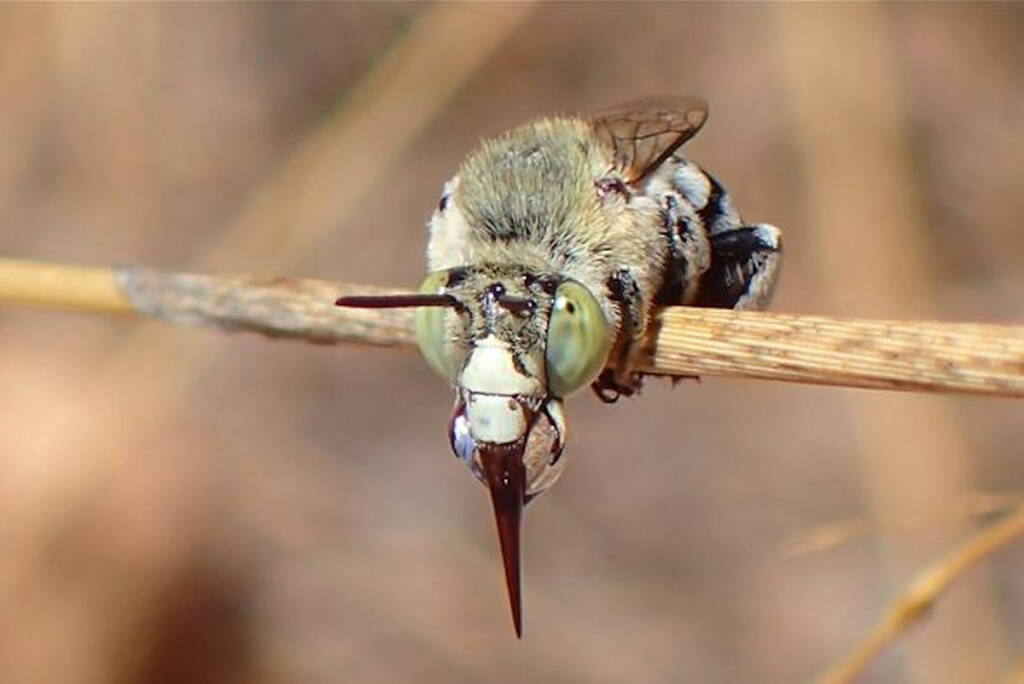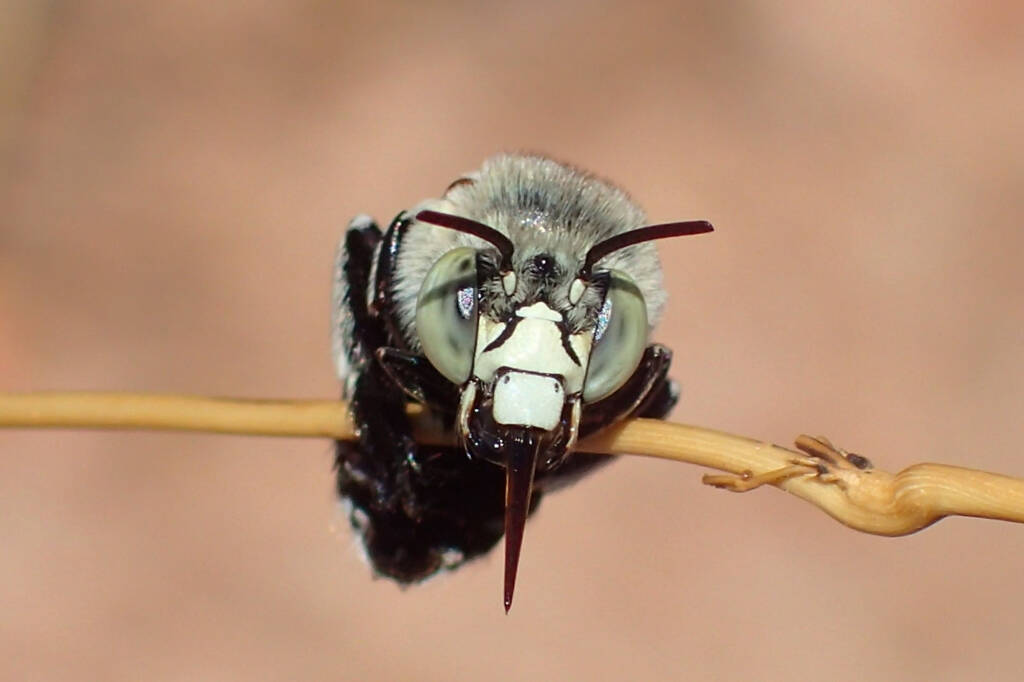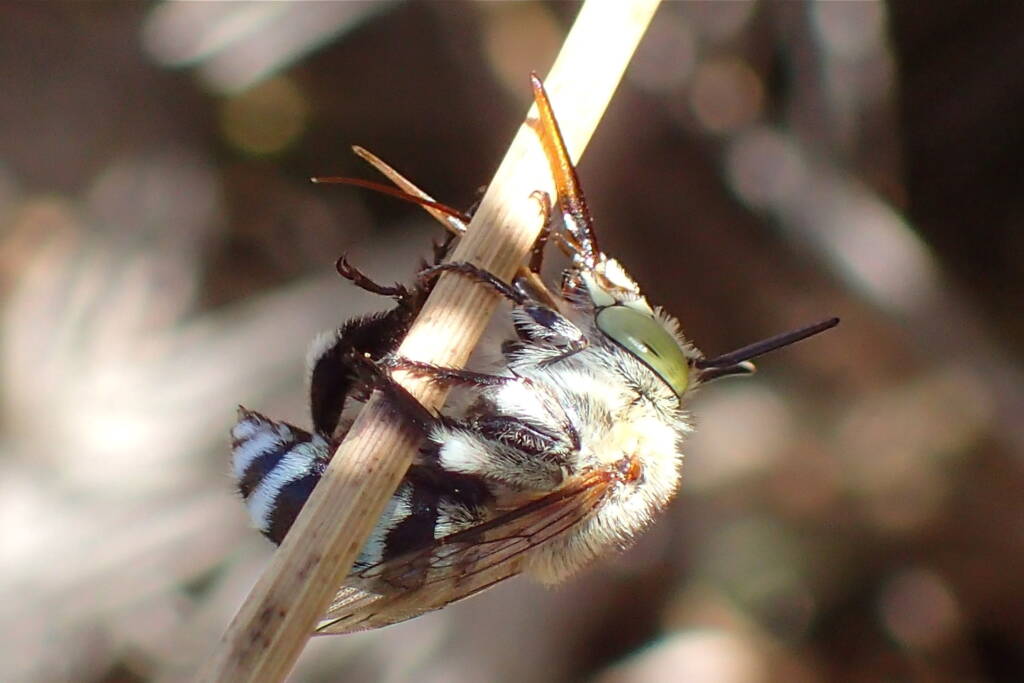Amegilla chlorocyaneaAmegilla chlorocyanea – blue-banded Amegilla chlorocyanea – bubbling bee
Did you know that certain native bees create bubbles. These wonderful photos captured by Gary Taylor in Western Australia, are of the Amegilla chlorocyanea in the act of “bubbling”. As Gary has said:
“Bubbling” is a process where the bee will regurgitate the watery nectar it has sucked up into a small ball, that it holds with it’s mouthparts, to evaporate the water out and condense it.
Gary Taylor, Western Australia
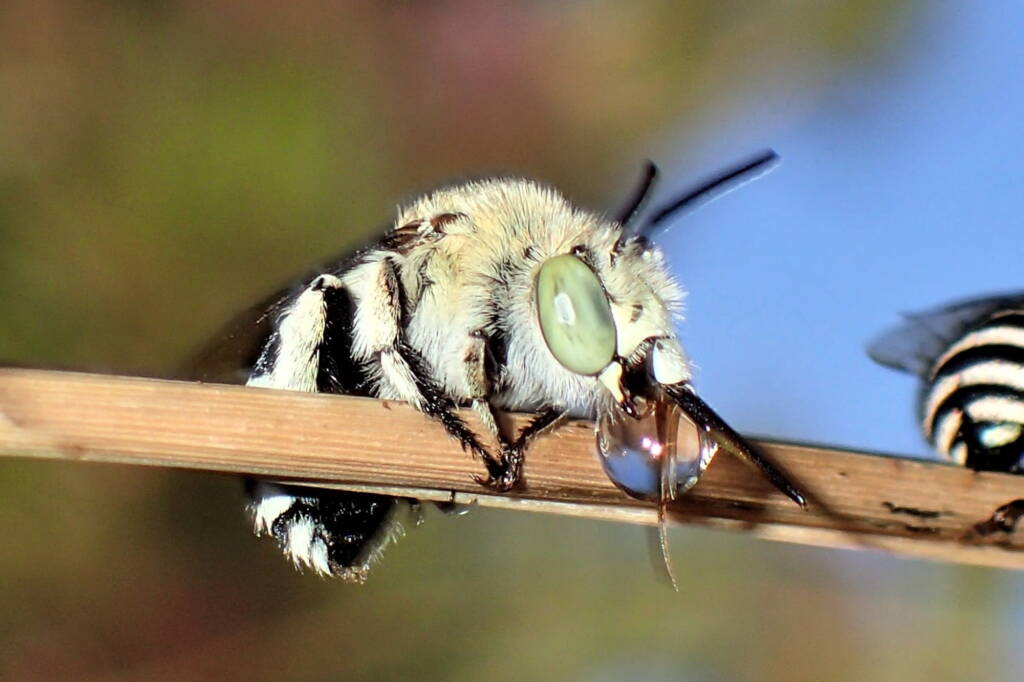
This act of when “bees bubble” is a process by which the bee is thought to be concentrating the nectar that they have collected from flowers, making it more suitable for their needs. Whilst it is not certain that all bees do this, many native bee species are know to and have been seen blowing bubbles. As well as the species Amegilla chlorocyanea picture here, but also the genus Lasioglossum, subgenus Homalictus and many of the bees from the family Colletidae blow bubbles.
Following is Gary Taylor’s pictorial step-by-step process for “bubbling”…
For those unaware, “bubbling” is the term given to the process of regurgitating nectar they’ve sucked up into a “bubble” (which they hold with their mouthparts) to evaporate and reduce the moisture content, condensing it, making it a richer and more compact (therefore you can fit more in) source of energy and nourishment…
So, first pic, this guy (in Amegilla, boys have five bands, girls have four) is just setting up… He’s faces the wind for maximum efficiency and begins the process… Within a few seconds he has his bubble fully exposed but he’ll only hold it there for another few seconds before sucking it back in. The more he works the bubble with his mouthparts the faster it will condense so he’ll repeat the process over and over until he has it down to a thick syrup…
Author Gary Taylor, Geraldton, Midwest WA
I have shown Amegilla bubbling from side on, which is probably a better angle to see the bubble, but here’s one from front on. You can see how he’s using his mandibles to “hold” the nectar bubble as he repeatedly blows it out and then sucks it back in (second pic), constantly working the bubble to evaporate the moisture out and condense the nectar. The last pic shows his mouth wide open and all his mouth parts poking right out, which I suspect he is wiping on the dried grass stem he’s on, kind of the bee equivalent to brushing your teeth after a meal.
Author Gary Taylor, Geraldton, Midwest WA
- Scientific classification
- Kingdom: Animalia
- Phylum: Arthropoda
- Class: Insecta
- Order: Hymenoptera
- Family: Anthophoridae
- Subfamily: Apinae
- Tribe: Anthophorini
- Genus: Amegilla
- Species: A chlorocyanea
- Binomial name: Amegilla chlorocyanea
Footnote & References
- Amegilla chlorocyanea, Images and content contribution by Gary Taylor, Western Australia
Amegilla chlorocyaneaAmegilla chlorocyanea – blue-banded Amegilla chlorocyanea – bubbling bee
Amegilla BeeApical tergites of females Amegilla Body Colour Amegilla adelaidae Amegilla aeruginosa Amegilla asserta Amegilla chlorocyanea Amegilla walkeri Teddy Bear Bees (Asaropoda)
BeesBees Anatomy Bee Behaviour Blogging Bees… Bees – image index Amegilla Bee Apis mellifera Austroplebeia australis Austrothurgus Braunsapis sp Ceylalictus perditellus Colletidae Euryglossinae Exoneura Homalictus Hyleoides bivulnerata Lasioglossum Lasioglossum (Chilalictus) Lipotriches Megachile Meroglossa Stenotritidae Tetragonula Thyreus Xylocopa

